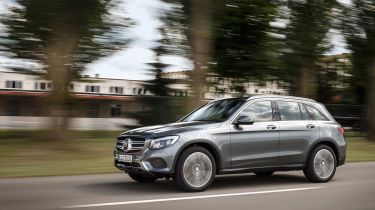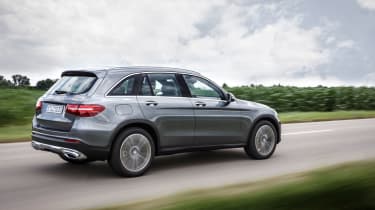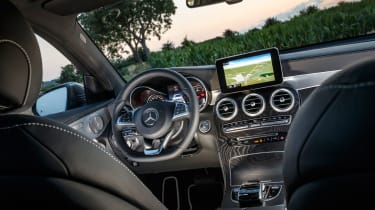Mercedes GLC 220d 2015 review
Despite a less powerful engine, the Mercedes GLC 220d offers few real-world drawbacks over pricier GLC models

For many, the £1,155 jump from the Mercedes GLC 220d to the more powerful GLC 250d will seem worth making, but in reality the boost in power is barely noticeable on the road. The entry-level 220d is smooth and refined and, despite the detuned engine, feels more than at home on the motorway. If you can’t afford the premium, you shouldn’t feel short-changed with the capable and well-sorted 220d.
We’ve already driven the powerful GLC 250d and plug-in 350e. But how does the cheaper 220d fare in a competitive premium SUV market awash with BMW X3s and Audi Q5s?
The 220d uses a detuned version of the 2.1-litre diesel engine in the 250d – and is exactly the same unit you’ll find in the identically badged C-Class. With 168bhp, it’s 33bhp down on the GLC 250d, while peak torque is reduced from 500Nm to 400Nm.
On the road though, the deficit is barely noticeable. Yes, the 250d is more eager when you plant the throttle in third or fourth gear, but from a standstill both cars build speed in a gentle yet efficient manner. The 220d goes from 0-62mph just seven tenths slower than the 250d (8.3 seconds vs 7.6 seconds) yet costs £1,155 less spec-for-spec.
Used - available now

2023 Ford
Focus
14,538 milesManualPetrol1.0L
Cash £17,087
2023 Jaguar
E-PACE
20,181 milesAutomaticDiesel2.0L
Cash £24,287
2021 BMW
iX3
21,991 milesAutomaticElectric
Cash £26,787
2021 MINI
Cooper Electric
11,207 milesAutomaticElectric
Cash £12,387Our car had the optional air suspension – but as we mentioned in our previous reviews, all UK cars come with steel springs and adaptive dampers. As a result, the GLC rides really well, and even this entry-level 220d is remarkably refined. Unlike in the C-Class, the rattly diesel is nicely suppressed, and there’s very little to speak of in terms of wind noise or tyre roar.
The GLC is no sports car, but body roll is controlled and there’s plenty of grip. The lesser 220d gets a 45:55 front to rear torque split, while the faster 250d sends 69 per cent to the back axle. It’d take a very keen driver to distinguish any difference in normal driving, though, and the two actually feel very similar on a twisting country road.
As with the 250d, all 220d models get a nine-speed automatic gearbox, which despite being single clutch, swaps cogs smoothly. It’ll quickly drop from ninth to fifth if you ask it to, and even into fourth if you request maximum acceleration by pushing the throttle right to the floor.
That gearbox certainly helps fuel economy too. The GLC 220d posts exactly the same fuel economy and CO2 figures as the more expensive 250d. Both cars return 56.5mpg and emit 129g/km of CO2 for £110 annual road tax.










